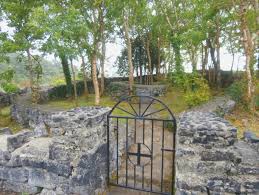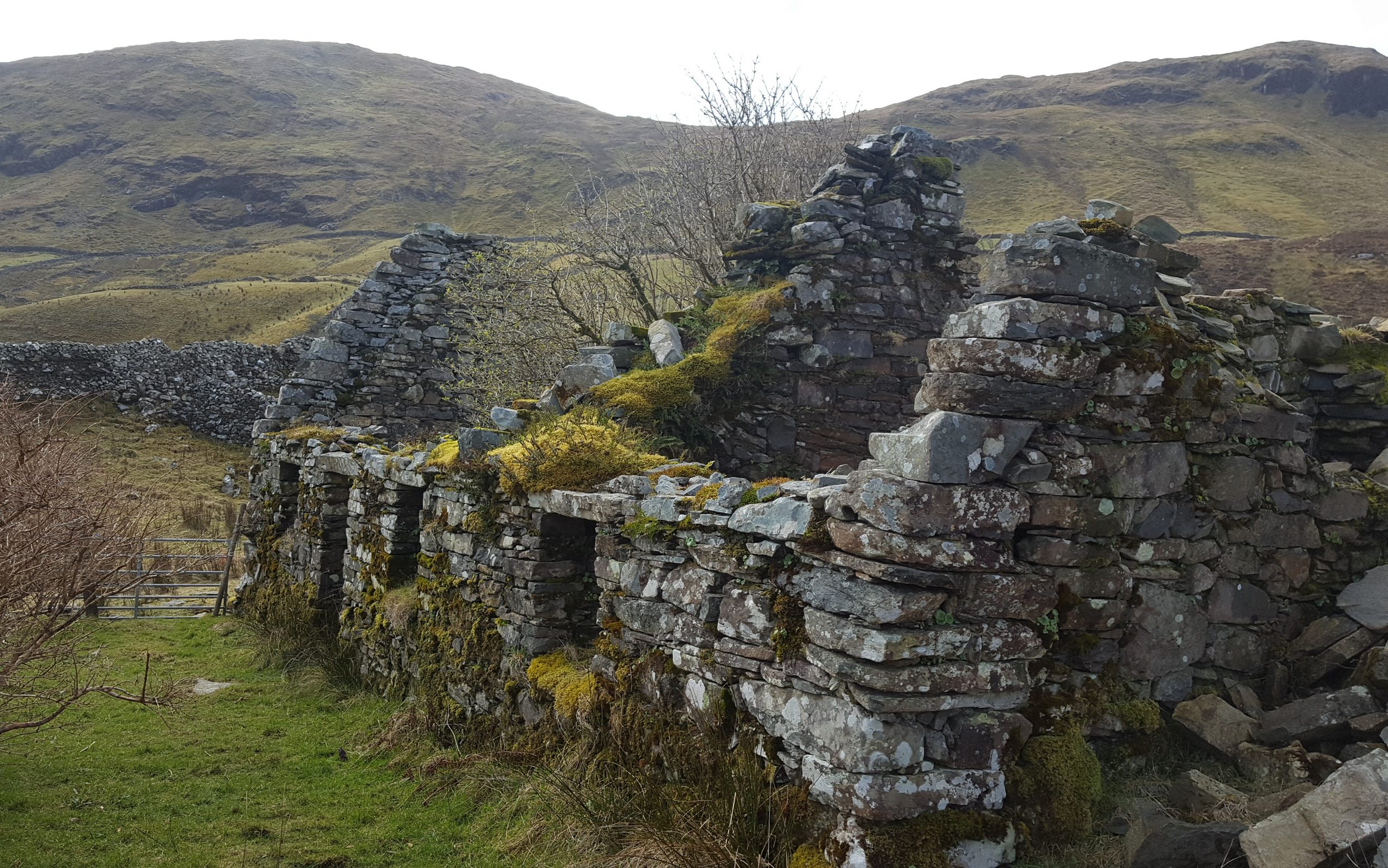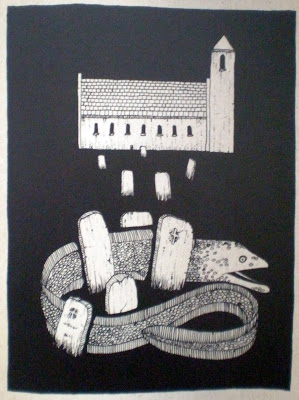by Hilary Kiely
According to William Wilde’s Lough Corrib – It’s Shores and Islands, St. Cuana, or Coona, was born at the end of the sixth century. A son of Miodhorn, son of Dubhratha, son of Éanna, son of Niall of the Nine Hostages, the great King of Ireland. His mother was Meda, or Finneda, daughter of Fingen, a nobleman in the western district of Munster. From the tribe and territory of Corca Dhuibhne, she was the mother of four distinguished men, her second was St. Cuana, whose festival and natal day is the 4th of February, from being a monk of Lios Mór, became Abbot of the Monastery of Cill Chuana, in the western district of Connacht.

Cuana is said to have died about the year 650 and is supposed to have written a chronicle of his own time, or Annals of Ireland, up to A.D. 628. Sir James Ware, in his “Writers of Ireland,” says: “Cuan or Cuanach, is an author often quoted in the Annals of Ulster as low down as the year 628, but not afterwards, by the name of the Book of Cuan, or Cuanach, from whence I conjecture that he was the author of a chronicle, and flourished about this time.” There have been, however, other Cuanas of later dates, so this is not definitive. Collected in the Acta Sanctorum some miracles attributed to him are recorded, including having crossed Lough Corrib on a flat stone with his followers from Gnó Mór (Moycullen). He was known for gathering around him, at his church and monastery of Cill Chuana, a great number of learned Christian men, “when the whole of this region, from Galway City (Baile Chlair na Gaillimhe) to Cong, was fertile with piety, learning and art”.
According to folklore, if you go to the crossroads at An Tobar Cuana on Good Friday, any seed you plant that day will never fail:
Aoine an Chéasta:- Duine ar bith gur féidir leis teigheann sé go Séipéal Cill Ainín chun Bóthar na Croise a dhéanamh ann. Duine ar bith nach féidir leis sin a dhéanamh deineann sé Bóthar na Croise ag Tobar Cuana. Má cuirtear síolra an lá sin ní theipeann orra ariamh.
(An Tobar Cuana, located at GPS coordinates 53.411795, -9.171015)
This post was originally published at Oughterard Heritage
References:
- The National Folklore Collection of Ireland: The Schools Collection, Volume 0065, Page 064
- Wilde, William. Lough Corrib: It’s Shores and Islands with notices of Lough Mask, Dublin McGlashan & Gill 1867

